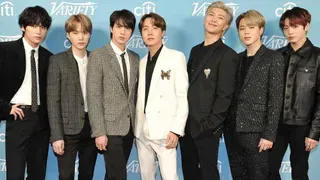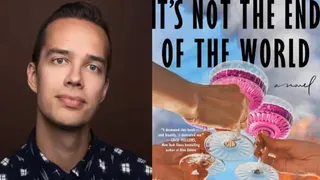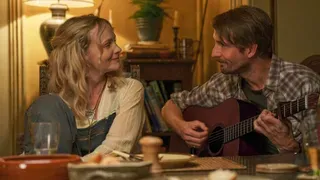July 11, 2014
EDGE 10.0: The Decade in Gay Fiction
Steve Weinstein READ TIME: 8 MIN.
In celebration of our tenth anniversary, EDGE is proud to launch "EDGE 10.0: The Decade in," a retrospective series of features looking back on the past ten years of headlines, politics, personalities, trends, music, film, parties, etc... written by Editor in Chief Emeritus Steve Weinstein, and the current editorial staff at EDGE.
It only makes sense that the premier information portal for the gay community would promote LGBT fiction. Writers have long given voice to the voiceless, given expression to our inner selves and made palpable the angst of being an outsider.
Since its inception 10 years ago, EDGE has profiled the most prominent names in the gay literary world. Back in 2005, Killian Melloy caught up with one of the most popular authors of gay fiction, William Mann, and asked him about his three "boy" books, "The Men from the Boys," "Where the Boys Are" and "All American Boy." "Each book," Melloy wrote, "places a premium of story and character, while still examining the political and social climate in which gays and lesbians seek to prosper."
Mann himself noted that the books all traverse a major crisis in the main characters' lives, prompting a self-examination. Our relationship to ourselves, he told Melloy, is "always the most interesting of them all."
Way back in November 2003, R.J. Bram caught up with another literary lion, Christopher Bram, during a tour to promote his novel "Lives of the Circus Animals." "I've written one straight novel and it was never published," he told Grubb. "So that taught me a lesson. Don't write any more straight novels."
Bram admitted that the main character of "Circus Animals" was at least partly inspired by Sir Ian MacKellan, who played the closeted film director in the adaptation of another Bram novel, "Gods and Monsters." Of the novel, which revolves around the world of New York theater, Bram said, "We're very self-conscious and always on stage. Actors just do it better than the rest of us."
There is one writer, as EDGE noted, who stands out as "the preeminent gay man of letters of our time," and "a prolific writer, an icon of the gay rights movement and the fight for equality for those living with HIV." Aside from his stunning works of fiction, Edmund White has edited anthologies to bring fledgling gay writers to the fore, wrote the definitive biography of the iconic gay writer Jean Genet and memoirs, essay collections and even a travel book about his beloved Paris.
In 2011, Mona Elyafi met White in Paris on the eve of the DVD release of a documentary about his life and work. White told her he didn't mind being categorized as a gay writer. "I think in America we have identity politics and everybody has a little niche if they're lucky," he said.
Another seminal gay writer, Alan Hollinghurst, is a native and lives across the channel from White's Paris. Of the 2006 BBC adaptation of his celebrated novel "The Line of Beauty," Ellen Werneke wrote that it "jumps off the screen, lovely and terrible and occasionally very difficult to watch."
When it comes to lesbian authors, there is no question who, as EDGE put it in 2009, has written "the preeminent chronicle of contemporary lesbian lives for more than 25 years": Pulitzer Prizing-winning satirist, memoirist and cartoonist Alison Bechdel. Bechdel remarkably was able to make a living syndicating a running cartoon series, "Dykes to Watch Out For," in gay media.
"After years toiling primarily in the gay ghetto," Rachel Pepper wrote, "Bechdel has burst onto the mainstream literary scene as a seeming overnight success." Bechdel herself said her success in the larger world required a certain "rearrangement of my self-concept."
Bechdel is the rare author who can straddle being down to earth, funny and even downright fun with higher literary aspirations. But there's something to be said for straightforward trash, especially the steamy pulp fiction of 1950s mass market paperbacks. Beneath the thin veneer of exposing the sordid lives of -- gasp! -- homosexuals, these books provided gay men and lesbians with a life raft.
They told these isolated individuals that, yes, there were others like them. And they had sex. Plenty of sex. I admit to a soft spot for these books, both as camp and commentary. In recent years, these books have been rediscovered and, more importantly, given their rightful place in our history. They have been the subject of dissertations, college classes and literary scholars -- but also appreciated on their own gloriously low level.
In 2010, I reviewed "Bobby Blanchard, Lesbian Gym Teacher," a randy tribute to the queen of pulp fiction Ann Bannon and her Bobbie Brinker series. Author Monica Nolan, I wrote, "gives it up for Bannon with a send-up involving a muscular, hot sports coach; her various romantic and sexual adventures (the latter demurely presented, of course -- these are ladies!); a (vaguely) lesbian-themed crime corny enough to be worthy of Nancy Drew herself; frustrated married wives; schoolgirl crushes; and tons of period detail."
Bannon herself was profiled that same year by Richard Dodd. "Gay life in the middle of the last century was quite an adventure," Bannon, a professor of English told Dodd. "Gee whiz, it was quite scary to be involved even on the fringes of the gay community." You've got to love that "gee whiz," inspired in part by the unexpected success that year of an off-Broadway play based on Beebo Brinker.
One of the most remarkable sea changes that has occurred in that past several years was the emergence of LGBT young-adult and kids' books. Not surprisingly, one of them, "And Tango Makes Three," based on the true story of two male zoo penguins that jointly raised a baby penguin, topped the American Library Association's 2007 list of works attracting the most complaints from various busybodies.
A year later, Scott Stiffler delved into the question of when -- or if -- children should be exposed to LGBT-themed fiction. "A few positive words in a child's storybook may contribute to a picture of good mental health for a youngster discovering his or her LGBT status," Aaron Cooper, the author of a book on child rearing, told Stiffler. "If literature for pre-schoolers portrays a family with parents identified simply as Mom and Dad, then it makes sense to create literature for pre-schoolers with LGBT parents."
The gay community's diversity is reflected in its fiction. Rakesh Satyal's 2009 novel "Bllue Boy" is a roman a clef about the son of Indian immigrants coping with the dual burden of being gay and striding two very different cultures. Satyal told Stiffler that he was particularly gratified by the novel having been embraced by the larger Indian-American community. He attributed it to the story primarily being one of a first-generation offspring dealing with his socially conservative family while trying to fit into American society, and doing it with humor: The teenager decides that the best way to face up to his sassiness is to declare himself a god.
Gods or monsters; that's how society sees us. Even today, with acceptance growing exponentially, the experience of being so fundamentally different remains the kind of conflict that is the perfect situation for fiction. No blog or social media platform can ever replace the solace we find in curling up with a good book and discovering how a gifted author describes our own lives to us.
Steve Weinstein has been a regular correspondent for the International Herald Tribune, the Advocate, the Village Voice and Out. He has been covering the AIDS crisis since the early '80s, when he began his career. He is the author of "The Q Guide to Fire Island" (Alyson, 2007).






